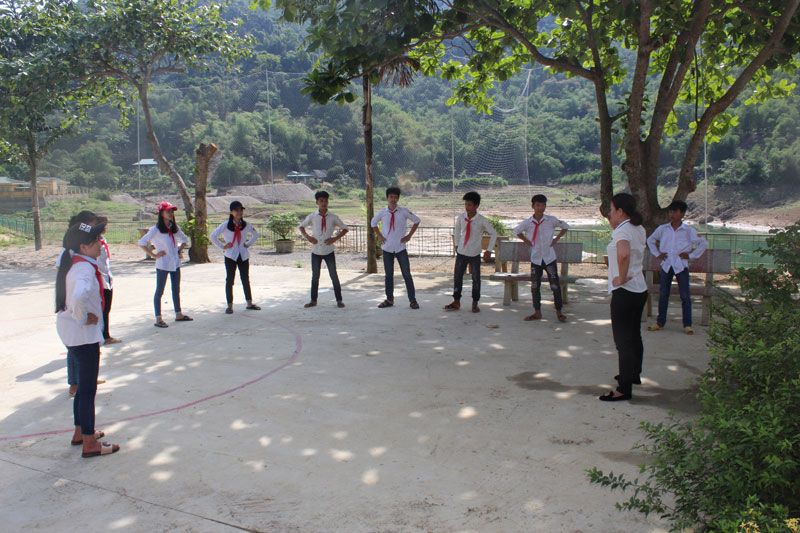
(HBO) – By life skills education, students have been given a chance to strengthen the capacity and quality, and promote positive, active and creative characteristics. These students feel self-confident and brave in all activities. Moreover, life skills education also has positive meaning in which it helps students consolidate the knowledge learned in the class. As a result, these students are equipped with life skills, collaborative communication and self-awareness. Additionally, they can learn how to express empathy and cultural behavior as well as make decision and solve problems. Finally, students are able to enhance their creative thinking, emotional management and face challenges. The outstanding result of life skill education is that students could gain the knowledge to use in practice and take care of themselves and their families.

Students in Hien Luong Secondary School (Da
Bac district) are equipped and instructed swimming safety skills and drowning
prevention.
According to the statistics of Department of
Education and Training, there are 43 schools in Da Bac district (including 20
kindergartens, 12 primary schools, 11 secondary schools and 10 high schools).
By the end of 2017 to 2018 school year, 100 percentages of the schools have
provided life skill education for students with the participation of 1368
teachers. Life skills education was organized by the schools through these
activities which were integrated in daily lessons, extracurricular classes,
creative experiences and talent clubs. At the moment, all of schools have
established many clubs such as elementary mathematics clubs, elementary
literatures clubs, English clubs, music clubs, chess clubs and football clubs.
Especially, the work of life skills education
has been inspired beautifully and attractively by these extracurricular classes
with practical and informative topics such as accident and injury prevention,
traffic safety, environmental protection and self-defense skills. Also, they
popularize life skills education and health protection.
In order to improve the quality of life
skills education, the schools have strengthened coordination with the local
authority, the families and other organizations to inform the development of
students, consult further about how to train and educate children. For example,
they could give students chances to visit the historical sites and support
finance for schools to organize extra-curricular activities
With just over a month left until the school summer break, students are eagerly anticipating a period of rest and fun after a year of academic pressure. To provide a healthy environment for the physical development, in addition to the classes that foster talents and enhance the academic knowledge, sports and physical activities continue to attract a large number of children and teenagers.
On April 17th, Hoa Binh Provincial Museum organized a program to promote and introduce the outstanding values of "Hoa Binh Culture” at the Boarding Secondary and High School for ethnic minority students in Mai Chau District.
The Hoa Binh College of Technical Technology, in collaboration with the Hoa Binh Technical and Economic College and the provincial Association of Literature and Arts, hosted a gathering on April 15 to celebrate Laos’ traditional Bunpimay (New Year) Festival 2025 and debut the new book "Nguoi Muong o ban Don” (Muong people in Don village).
In the millennia-long history of national construction and safeguarding, people of all ethnic groups in Hoa Binh have been united and closely bound together to overcome all difficulties and challenges, standing alongside the entire Vietnamese people throughout the history of building and defending the country.
Living green is a healthy, positive, and sustainable lifestyle that not only helps protect
the environment and quality of life but also conserves natural resources and ecosystems.
Among the many ways to embrace this lifestyle, reducing plastic consumption is one of the most impactful.
The women's unions at all levels in Kim Boi district have been making significant contributions to the movement of building cultural life in the local community.
The movement helps improve rural look and the spiritual and material lives of local residents.



